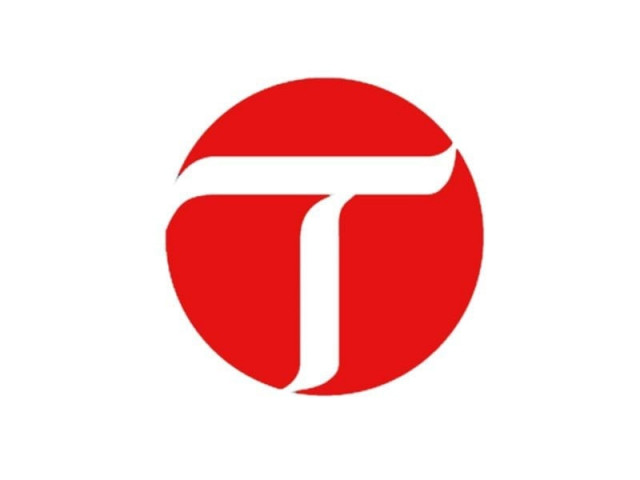An ADHD diagnosis means a person is prone to impulsivity and distractibility, which can manifest in the form of substance misuse, traffic accidents, criminality and even suicidal behavior.
A recent study published in the British Medical…

An ADHD diagnosis means a person is prone to impulsivity and distractibility, which can manifest in the form of substance misuse, traffic accidents, criminality and even suicidal behavior.
A recent study published in the British Medical…


US president says Ontario government’s anti-tariff ad featuring Ronald Reagan needed to be taken down ‘immediately’.
Published On 25 Oct 2025
Donald Trump has announced an additional 10…

 BBC
BBCA TV presenter has described how she has had to fight for treatment and scans as she battles breast cancer.
Mari Grug, 41, from Mynachlog-ddu in Pembrokeshire, was…

Pakistan’s iron and steel scrap, raw material for iron bars used in housing and other infrastructure building, imports surged to their highest level in nearly four years, driven by renewed private construction activity and improved cost dynamics for local steel producers.
According to data compiled by Arif Habib Limited (AHL), iron and steel scrap imports rose sharply to 359,759 tons in September 2025, marking an increase of 30 percent year-on-year (YoY) and 36% month-on-month (MoM), the highest monthly volume since December 2021.
“The demand uptick is mainly coming from private sector construction projects that were stalled for a long time, housing, apartment complexes, and renovation works are showing signs of revival,” Nasheed Malik, Analyst at Arif Habib Limited, told the ET.
During the first quarter of FY26 (JulySeptember 2025), total scrap imports reached 935,981 tons, up 12% YoY. In value terms, imports during September stood at $178 million, showing an 11% YoY increase, even though the average import price per tonne dropped 15% YoY to $494, reflecting lower global scrap prices.
On a quarterly basis, the import value fell slightly by 2% YoY to $486 million due to a 12% YoY decline in the average import value per ton to $524.
Commenting on the development, the Arif Habib Limited analyst said that the surge in steel scrap imports reflects a revival in the long steel segment, which primarily caters to the construction sector through products such as rebars and girders.
Malik added that the growth in steel demand is roughly 10%15%, consistent with the 14% year-on-year growth in cement dispatches during the last four months, indicating a broader pickup in construction activity.
Pakistan’s cement sector is expected to post a 30% year-on-year growth in profit after tax (PAT) to around Rs25 billion in 1QFY26, according to Optimus Research. The profitability rise stems from a 14% YoY increase in revenue, lower coal and finance costs, and improved gross margins of 34.3%. Cement dispatches rose 16% YoY to 12 million tons, supported by 14% higher domestic sales and 21% growth in exports. Despite stable local prices, cheaper imported coal, better fuel mix, and lower interest rates boosted earnings. The outlook remains positive, aided by stable PKR, soft energy prices, and infrastructure spending.
“In the south, there’s also some progress on government infrastructure projects, and in October, flood rehabilitation work has started, further adding to demand,” Malik said.
The analyst noted that gross margins in the steel sector have improved significantly in recent months, rising from 5%6% previously to around 10%11% now, supported by a combination of policy measures and lower input costs.
“One key factor is the reduction in electricity tariffs for industrial consumers, which has lowered production costs. In addition, the government has eased the import duty structure, duties on raw materials like steel scrap have been reduced by 1%2%, and trade duties have also been brought down by 2%, creating room for margin expansion,” Malik said.
He added that the decline in policy rates has further supported steelmakers by reducing financing costs and easing working capital constraints. “Managing working capital is now easier because finance costs have come down. This has allowed producers to import more scrap and ramp up operations,” he explained.
Analysts believe that the surge in scrap imports signals renewed momentum for Pakistan’s long steel industry, a critical component of the domestic construction supply chain. The sector, which had been under severe pressure during FY23 and FY24 due to import restrictions, currency volatility, and high interest rates, is now showing early signs of recovery.
AHL’s report described the recent import trends as “positive for the long steel sector,” noting that steel scrap is the primary raw material for producing billets, rebars, and girders.
Industry experts say that if the current demand trajectory holds, supported by private housing activity and selective public projects, steel producers may see improved capacity utilisation and cash flow stability in FY26.
However, risks remain. Any renewed currency weakness, potential reversal in tariff relief, or delays in public development spending could moderate the sector’s gains. Furthermore, the decline in global scrap prices, while currently beneficial, may reduce import value growth and impact export competitiveness if price volatility returns.
For now, though, sentiment appears to be improving. “Both demand-side and policy-side dynamics are turning favourable for steelmakers,” Malik added. “Imports are rising because of stronger domestic demand, better margins, and improved financing conditions, a combination we haven’t seen in years.”

Luke Littler’s hunt to become world number one continues after he was knocked out of the European Championship in a thrilling 10-7 second-round defeat by James Wade.
Luke Humphries, meanwhile, narrowly avoided a shock as he came from behind…

Webster Financial Corporation recently reported strong third quarter results, with net interest income rising to US$631.67 million and net income increasing to US$261.22 million compared to a year ago.
An interesting insight is that the company completed a significant share buyback while maintaining conservative credit positioning, with only a slight increase in net charge-offs relative to average loans and leases.
We’ll assess how Webster Financial’s solid earnings growth and ongoing share repurchases shape its current investment narrative and outlook.
Explore 27 top quantum computing companies leading the revolution in next-gen technology and shaping the future with breakthroughs in quantum algorithms, superconducting qubits, and cutting-edge research.
To be a shareholder in Webster Financial, you need confidence in its ability to translate strong core earnings, broad-based loan and deposit growth, and disciplined credit management into steady value, while overcoming margin compression and regulatory pressures. The recent quarterly update, with robust net interest income and net income growth, supports the investment case, but the minor uptick in net charge-offs does not appear to materially impact the core short-term catalysts or the major risk, which remains tied to commercial real estate exposure. Among the latest developments, Webster’s Q3 share repurchase of 2.2 million shares for US$131.2 million emphasizes management’s ongoing commitment to returning capital to shareholders, complementing balance sheet growth and technology investments as key earnings catalysts. This activity sits alongside management’s ambitions for fee growth from the Marathon joint venture and the operational expansion of HSA Bank, both of which feature in longer-term growth stories. Yet, a key risk that investors should keep in mind relates to the company’s sizable commercial real estate portfolio and what could happen if…
Read the full narrative on Webster Financial (it’s free!)
Webster Financial’s narrative projects $3.4 billion revenue and $1.2 billion earnings by 2028. This requires 10.8% yearly revenue growth and a $369 million increase in earnings from $830.6 million currently.
Uncover how Webster Financial’s forecasts yield a $71.59 fair value, a 27% upside to its current price.
Simply Wall St Community members offered 3 fair value estimates between US$38 and US$129.82, showing broad divergence in their outlooks. These differences highlight how trends in commercial real estate risk can influence the perceived long-term performance of Webster Financial.

Canon Marketing Japan (TSE:8060) reported annual earnings growth of 5.3%, a pace that falls below its five-year average of 10.2% per year. Net profit margin held steady at 5.9%, unchanged from last year, signaling stable profitability without margin expansion. Investors will weigh the modest growth against expectations, especially as revenue and earnings forecasts continue to trail the broader Japanese market.
See our full analysis for Canon Marketing Japan.
Next up, we put the latest earnings numbers up against the narratives that investors and analysts have been following. We review what holds up and what gets shaken by the data.
Curious how numbers become stories that shape markets? Explore Community Narratives
Canon Marketing Japan’s revenue is forecast to rise by just 1.1% annually, a pace far below the Japanese market’s 4.4% yearly forecast and below its own five-year average earnings growth of 10.2%.
What stands out is how steady the company’s prospects appear, according to prevailing analysis, with expectations focused on incremental improvements instead of major leaps.
Despite this slower revenue growth, the company maintains a net profit margin of 5.9%, matching last year and signaling operational stability.
Observers note consistent earnings and profit growth in the past, but there are clear signs the growth engine has shifted into a lower gear compared to previous years.
The current price-to-earnings ratio of 16.8 times sits above the industry average (15.1x) and peers (13.2x), suggesting investors are paying a premium for perceived quality and reliability.
Recent market commentary highlights a tension between this valuation premium, which reflects stable profits and a strong reputation, and the expectation that future earnings growth will now trail the broader sector.
Some argue the company’s reliable digital and IT service strengths help justify a premium, but others caution that ongoing slow growth risks making the stock appear increasingly expensive if momentum does not pick up.
The combination of high quality past earnings with more modest growth guidance leaves the narrative finely balanced between quality and value concerns.
At a share price of ¥6,139, Canon Marketing Japan currently trades below its DCF fair value estimate of ¥7,943.30, pointing to potential upside if earnings and cash flows meet expectations.
Prevailing analysis points out that while a discount to DCF fair value can attract patient investors, the muted growth outlook means the gap might not close quickly.
Forward-looking investors are likely weighing the modest valuation discount against the reality of lower forecast growth, leading to a wait-and-see approach on the stock.
This fair value gap keeps valuation watchers interested, though momentum will depend on evidence that the company can accelerate beyond its new, lower pace of expansion.